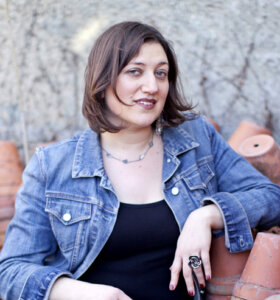What’s Marijuana Doing In The Talmud — And Hashish Too?

Marijuana Image by Getty Images
For linguists, copy editors, and Hebrew obsessives the world over, this has been a marijuana-filled week. Allow me to explain: this week, the Associated Press issued guidelines on the use of marijuana in news stories — the word, not the drug. And also this week, the Academy of Hebrew Language took to Twitter to explain that cannabis appears in the Mishna, written down in approximately 200 CE, where, to be precise, it is spelled cannabus. So, yes, the high authority on Hebrew language is claiming that pot is, linguistically at least, very Jewish.
Seriously.
First things first. The Associated Press, whose style guidelines influence thousands of English-language news outlets and those who write for them, had a lot to say on the topic. I counted a whopping eight paragraphs in the e-mailed AP Stylebook update on marijuana. Here is the first, and most, well, potent paragraph, labeled “marijuana, medical marijuana (new entry)”:
Marijuana is the dried flower of the cannabis plant, used as a drug for recreational or medical purposes. Cannabis is the usual term outside North America; it and pot are also acceptable. Some governments and other entities prefer cannabis because of arguments that the term marijuana was popularized in the United States in the early 20th century to stoke anti-Mexican sentiment. Slang terms such as weed, reefer, ganja or 420 are acceptable in limited, colloquial cases or in quotations.
Alert linguists and caffeinated potheads might notice that this paragraph, delightful as it is, goes back only to the early 20th century. Fortunately, for students of pot, the Academy of Hebrew Language can provide a verifiable glimpse into the existence of cannabis, in Hebrew at least, a minimum of 1800 years ago, when the Mishna, part of the Oral Law, was written down. And for those keeping track, the Academy’s tweet combining Mishna and marijuana preceded the AP Stylebook update by a few days; it’s unclear to this observer whether there was any international coordination.
Here’s that tweet, complete with a medicinal visual:
Now for a bit of translation. The Academy tweets that in Hebrew, cannabis is cannabos, or hashish, which is of course, an Arabic word, written here with the Hebrew chet as the first letter, or “ch.” “It’s interesting to know that the plant name appears in the Mishnaic literature,” the Academy adds. It also mentions that in 1897, Eliezer Ben Yehuda, compiler of the first modern Hebrew dictionary and the man widely credited with sparking the revival of Hebrew as a spoken language, published a translation of “Around the World in Eighty Days” by Jules Verne, in his newspaper HaTzvi, or The Deer, and that this story mentioned cannabos in connection with drunkenness and deep sleep.
Sounds about right.
Of course, because those who follow the Academy are eager to get high on linguistic stuff, the exact Mishnaic reference for cannabos was an immediate and passionate topic of discussion. But the Academy tweet-master was ready, with an entire article about it by Yaakov Etzion, posted online, which helpfully explains that both the Hebrew cannabus and the Arabic word cambus apparently come from the Greek word kannabis.
In the Mishna, the word cannabos appears in connection with a discussion of the prohibition on kla’aim, or cross-breeding, in this case mixing cannabus and pishtan — or cannabis and flax. And the cannabis plant appears several times in the Mishna and the Talmud, because it was used in the making of fabric — and yes, that’s where the word canvas comes from.
Etzion’s article even includes a tantalizing reproduction of a 14th-century edition of the Tosefta, the supplement to the Mishna, which clearly states that flax from the cannabus plant is not permissible.
In that 14th-century text, it’s spelled cannabis.
Of course, one of the delights of contemporary Hebrew is how deeply it is rooted in ancient texts; I get a personal high, every time, when I see how centuries-old words are transported to modernity. This tendency to put some time-travel in the language also appears in the annals of marijuana in Hebrew. In 1913, the Academy of Hebrew Language published a guide to the names of plants found in the land of Israel, and naturally, it used Jewish textual sources as inspiration; it also turned to Arabic. In that guide, the plant was called canbus, because of the Mishnaic reference, and because it was similar to the Arabic term cambus.
Other dictionaries, the Academy explains, used different vocalizations, using different sets of Hebrew vowels: cannavos, cannabus and cannabos, but not cannabis, which is what much of the rest of the world was calling it.
Go figure. Jews are used to being a little different, even when it comes to the term for weed.
Today the technical name for pot in Hebrew is cannabus, as it is written in an academic dictionary dated 1970. But in a 2009 dictionary of biological terms, chashish is also listed, which is the Hebrew adoption of the Arabic hashish.
The story of hashish happens to be exciting, or more accurately, terrifying. The Arabic ḥashshāshīn, plural of ḥashshāsh, which the Merriam-Webster dictionary translates as a “worthless person, literally, hashish user, from hashīsh hashish” made it into Medieval Latin as assassinus.
And yes, that’s where the word “assassin” comes from.
Interestingly, Merriam-Webster dates the first known use of “assassin” in English to 1520, and defines “assassin” in two ways, depending on whether or not the word is capitalized:
1: capitalized: a member of a Shia Muslim sect who at the time of the Crusades was sent out on a suicidal mission to murder prominent enemies
2: a person who commits murder; especially: one who murders a politically important person either for money or from fanatical adherence to a cause
So yes, the word hashish is connected to murder, and perhaps, the Crusades-era version of today’s suicide bombers, but I would argue that hashish also connected to survival. The word has a bit of an honored spot in the history of Jewish literature, because it appears in the title of Walter Benjamin’s famous essay “Hashish in Marseilles.” If you haven’t read it, try it — reading Benjamin offers his own sort of high; after all, he’s the guy who makes unpacking his library sound like a trance, not that far from a drug-induced trance. That essay, for the uninitiated, is the famous “Unpacking My Library: A Talk About Book Collecting,” which begins: “I am unpacking my library. Yes I am.”
Benjamin tried to flee the Nazis, and attempted to cross the border from France into Spain on September 25, 1940; his plan was to come to America. But the Franco government had cancelled all transit visas and ordered the Spanish police to send all those holding such papers back to France; Benjamin committed suicide the next day by overdosing on morphine tablets. But his ideas on translation, art, and so much else did survive—and in many ways, Benjamin’s style and approach is part of the long and magnificent Jewish literary tradition of commentary.
I’ve been thinking a lot about Benjamin lately, as rhetoric about immigrants and refugees grows louder, and wishing he had more time on earth, with or without hashish, and preferably, with his library. The Hebrew language was, like Benjamin, like many commentators, and like the tradition of commentary itself, a refugee, and it survived all sorts of exiles and assassins to make it into our mouths, and perhaps in this case, our pipes.
What the Mishna and marijuana share is, of all things, this: the knowledge that making it from the ancient to the contemporary is the ultimate high.
Aviya Kushner is The Forward’s language columnist and the author of “The Grammar of God” (Spiegel & Grau). Follow her on Twitter @AviyaKushner
















